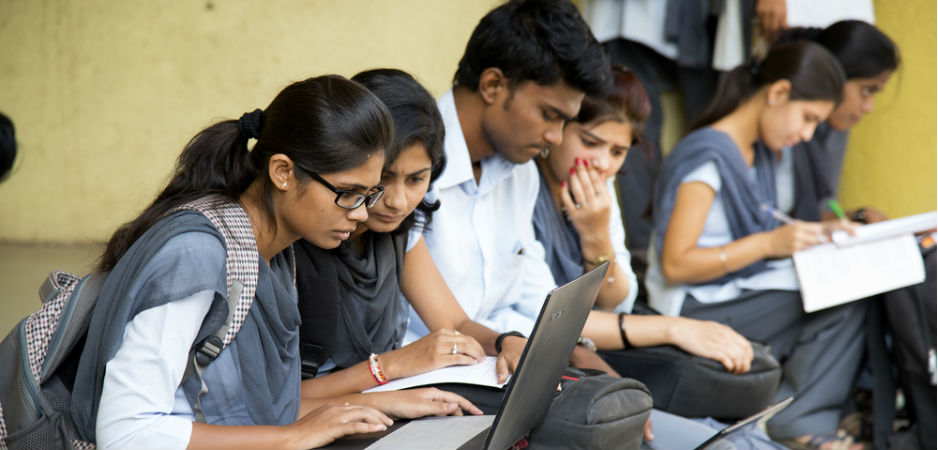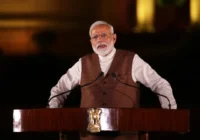Every hour, a student commits suicide in India.
On February 1, a student of the prestigious Indian Institute of Technology (IIT) killed himself by jumping off his hostel building in Hyderabad. In early January, a 27-year-old medical student killed herself because she was unable to handle exam stress. December 2018 saw three suicides in four days in the city of Kota, in Rajasthan. According to latest available data from the National Crime Records Bureau, a student commits suicide every hour in India.
India, the world’s second most populous country of over 1 billion, has one of the highest suicide rates among those aged 15 to 29 and accounts for over a third of global suicides among women each year. Academic stress is a major reason for suicides among both female and male students in India, and the pressure continues beyond college. Stories of successful students securing high salaries make the headlines and play a significant role in parents pushing their children to earn the same.
It’s not uncommon to see students stressed, anxious and under pressure in a society that believes in keeping students in check by pushing them beyond their limits toward higher achievements. Young high school students are forced to enroll in coaching factories, where they cram for exams to get into prestigious schools like the IIT. Students follow draconian rules and study schedules that leave them feeling depleted and depressed.
Many students are forced to take just one holiday a year, follow a 14-hour study schedule and sit exams on Sundays. Those who fail to follow the demanding study schedules feel responsible for disappointing their parents and falling behind their peers. Many students who eventually pass the entrance exams feel even more pressure to excel at university, often taking their own lives when it all becomes too much.
It is, therefore, fairly common for Indian students to have experienced suicide in their lifetime. The writer of this article has witnessed three to date; the writer’s brother was a witness to a student’s suicide attempt at IIT Delhi last year.
Disturbing Trend
Many people in India argue that caste-based discrimination lies at the root of student suicides in India. In 2007, the Thorat Committee, which was set up to investigate allegations of harassment against students that belong to the scheduled castes and tribes at India’s top medical school, the All India Institute of Medical Sciences (AIIMS), found rampant discrimination against students, many of whom claimed that they were segregated and asked about their caste during examinations.
It’s not uncommon to see students from lower caste backgrounds complain about the lack of institutional support and infrastructure. In 2017, Milind Awad, an assistant professor at Jawaharlal Nehru University, pointed out that Indian universities were inept at dealing with nervous breakdowns among students despite claiming to be egalitarian spaces.
The suicides begin in school, continue in college and into the late 20s — among both upper and lower caste students — pointing to a problem within the system itself. Student suicides can be easily averted, but merely setting up training and sensitization sessions for teachers, increasing the role of counseling services and setting up expert committees to review suicide cases in schools won’t do the trick.
Mental health issues such as anxiety and depression need to be addressed without stigma in schools and colleges, and parents should be encouraged to inculcate and foster feelings of sensitivity toward their children. According to Dr. Harish Shetty, a psychiatrist at Dr. L. H. Hiranandani Hospital, an inability to cope with small frustrations, failure and loss, often coupled with social alienation, creates a critical situation for many students. In March 2018, Neerja Birla, the founder and chairperson of Mpower, an organization that provides holistic care for those suffering from mental illness, rightly pointed out that when it comes to mental health, Indian parents need to stop going into denial mode and issuing defensive statements like, My child has no such problems!
According to a survey by the Centre for the Study of Developing Societies, about 4 in 10 students in India have experienced bouts of depression in the last few years. The issue of mental health among students was also addressed by Prime Minister Narendra Modi, who urged for “expression of depression instead of its suppression” in his radio address.
In 2015, filmmaker Abhay Kumar made an acclaimed documentary, Placebo, about the prestigious All India Institute of Medical Sciences, which exposed the rampant depression among its students, showcasing the impact social expectations and academic rigor played in motivating students to take the drastic step of ending their lives. Admission to AIIMS is more competitive than those of America’s top schools like MIT and Harvard, which have acceptance rates of 9% and 7% respectively; AIIMS has an acceptance rate of below 0.1%.
Placebo is one of the first documentaries to explore the problem of student suicides in India at an institute for the academic elite — something that has only been casually addressed in India’s popular culture. Kumar says that he was motivated to make the film after his brother Sahil, a student at AIIMS, punched through glass with his right hand in a fit of rage, sadness and confusion. Sahil had complete nerve damage, lost motor control, and skin from his thigh had to be grafted onto his hand.
Fierce Competition
The Indian education system fosters a competitive environment, and students who don’t secure admission to top institutes are viewed as failures. An onus on education as a medium for success needs to become a thing of the past. Until then, schools and colleges need to foster a culture of understanding and trust, where students feel free and safe to talk about issues like bullying and anxiety. Highly competitive institutes such as the AIIMS and IIT can look for solutions like allowing volatile students to take a gap year or starting courses for parents to help them understand the importance of being more receptive to their children’s needs.
Another move that should urgently be taken is to stop allowing universities to advertise placements and salaries. All major Indian schools have a placement process, where companies offer entry-level jobs to students on campus. Salaries can range from 200,000 rupees ($2,800) to 10 million rupees ($142,000). In India, job security is viewed as an integral addition to a good education, which leads colleges to heavily advertise their placements to garner good reviews and get more students to enroll. This creates pressure on students who feel a sense of personal failure when they do not secure the best job during placement season.
The government should also carry out reform in the job market by asking the private sector to rethink criteria while hiring mid-career employees. Many young Indians find it difficult to switch jobs owing to their low grades in college or the prestige level of their alma mater, which are the main criteria for many companies in India. Grades and colleges should stop being viewed as the only criteria for securing a “good job.” India can try adopting the system followed by some US states where asking a candidate’s past salary history or even grades is illegal. Such systems increases transparency and reduce anxiety among candidates in the early stages of their career, who should be judged on the basis of their skills, not external competencies.
On the Political Sidelines
Student suicides should not be sidelined over political issues, nor should they be made into a political issue. Farmer suicides take precedence in news reporting owing to their political nature, as farmers are a major voting sector during the election season. News of students committing suicide is not taken with the seriousness it deserves. Rohith Vemula, a PhD student at the University of Hyderabad, started a political wave with his suicide, as it exposed rampant discrimination against lower-caste Dalits on campus. But even his death couldn’t bring the problem to the fore: More than his caste, the issue of student suicides as a whole should have been addressed by politicians, which unfortunately didn’t happen.
The government needs to take affirmative action before several issues such as rising unemployment begin to further threaten the mental health of countless students across India, who face a bleak future if they don’t secure a job upon graduation. According to data from the National Sample Survey Office, which was promptly declared unverified by the government, India’s unemployment rate is 6.1% — the highest in 45 years. In a country where more than 50% of the population is below the age of 25, this is a startling statistic.
Student suicides can be expected to increase if the job market remains highly competitive and the education system offers no solace to those getting college degrees. India is already known to produce labor that does not meet international standards because of a broken higher education system. The lack of jobs and failure to create skills among the country’s youth will simply increase the frustration among students, forcing them to take the drastic step of ending their lives.
India needs change, and it needs it now. The lives of students are not dependent on a change in government, but on affirmative action, which every political party, given the status quo, does not have the capability to carry out.
The views expressed in this article are the author’s own and do not necessarily reflect Fair Observer’s editorial policy.
Support Fair Observer
We rely on your support for our independence, diversity and quality.
For more than 10 years, Fair Observer has been free, fair and independent. No billionaire owns us, no advertisers control us. We are a reader-supported nonprofit. Unlike many other publications, we keep our content free for readers regardless of where they live or whether they can afford to pay. We have no paywalls and no ads.
In the post-truth era of fake news, echo chambers and filter bubbles, we publish a plurality of perspectives from around the world. Anyone can publish with us, but everyone goes through a rigorous editorial process. So, you get fact-checked, well-reasoned content instead of noise.
We publish 2,500+ voices from 90+ countries. We also conduct education and training programs
on subjects ranging from digital media and journalism to writing and critical thinking. This
doesn’t come cheap. Servers, editors, trainers and web developers cost
money.
Please consider supporting us on a regular basis as a recurring donor or a
sustaining member.
Will you support FO’s journalism?
We rely on your support for our independence, diversity and quality.








